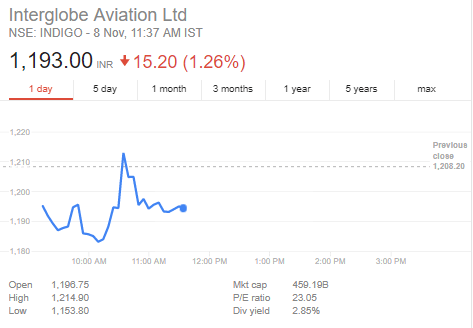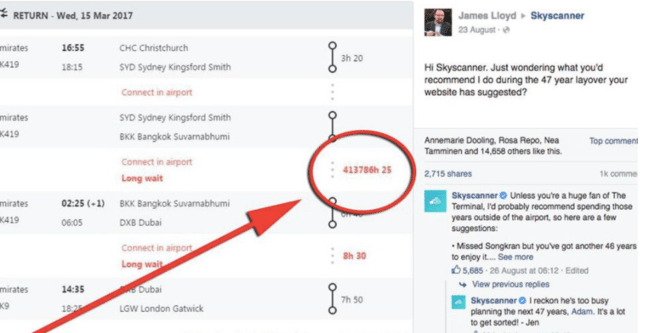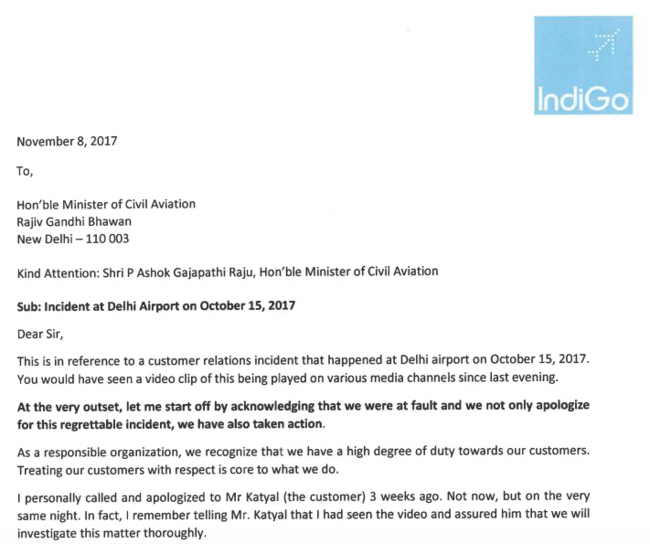S#it hit the fan? 6 steps to handle your online reputation like a boss
Aum Janakiram

Warren Buffett once said, “It takes 20 years to build a reputation, but only 5 minutes to destroy it. If you think about that, you’ll do things differently.”
Getting your brand noticed in a cluttered market is a challenging endeavour, and once you get into the limelight, everyone is watching. Some are even hoping you will falter. As a brand gets bigger, the risk of something going wrong becomes higher. And when (not if) unflattering news hits social media, all hell can break loose. Your brand can face a huge setback not only in terms of reputation, but in the bottom line as well.
This is especially true with companies that have been doing a great job so far and then release substandard products, or when associates makes bad judgment calls.
The mistake could range from a minor one — for instance, a spelling mistake — to a major one like an insensitive comment or action.

Take the recent fiasco where Indigo Airlines ground staff assaulted a passenger right on the tarmac. The cherry on the top was that it got captured on video.
Following the release of this video, people took to social media to express their displeasure. The news channels spread the clip like wildfire. Indigo’s stock-value plummeted and the comment bullets fired hard at them on all social media platforms.
So, what can you do if something goes wrong? #
Here are a few pointers for damage control:
1. Listen to what people are saying about your brand
The concept of “bitching” on social media is very common and often goes unnoticed by brands until someone tags the brand’s page. By the time it does get noticed, the damage may have already been done. Which makes you realise why your customer orders had drastically dropped in the past few days.
Setting up alerts using Google and monitoring search terms using a dashboard like Hootsuite will help you nip negative feedback in the bud. That said, not all feedback will be negative, so take the effort to respond to positive feedback too, as it will show that you are a brand that listens ALL THE TIME.
2. Respond quickly
Jay Baer, President of Convince & Convert, would tell you to “hug your haters.” Answering complaints increases customer advocacy; not answering them decreases it.
In times of crises, social media managers need to have a response template for all types of feedback. That does not have to sound robotic. Having a variety of responses for the same questions adds to the human factor. Be warned; there will be people who will continue to egg you on even after you respond in hopes that you will lose your cool or give in. It’s best to ask the person for their contact details to address the situation offline. If the person continues to be unreasonable and/or abusive, escalate the matter to your PR and legal department and plan for suitable action.
Use canned responses merely as a framework to diffuse the situation. But not all situations will be predictable and the need to improvise is vital. That’s exactly what Jen from Skyscanner did when a passenger posted on social media about the 47-year long flight on their site. The way Jen handled this made her a hero on social media. If community managers want an idol to look up to, Jen is definitely one of them.
Read the whole story about Jen here.
3. Create a social media crisis checklist
It is a good idea to have a crisis-management checklist to handle the flak, especially in large organisations. Addressing and responding to the issue in a timely manner is crucial. Using a checklist with pre-approved responses helps community managers and customer-care representatives tackle all possible issues that may arise. This could range from natural disasters, terror attacks and advertising faux pas to trolling, mean emails and negative comments.
When the crisis is major, it needs to be addressed by the right stakeholders, carefully worded and crossed-checked by a legal team to ensure there is no further backlash to the response. Aim to not take more than sixty minutes. And then, hope and pray there are no further consequences or lasting impressions. Also, plan for every possible disaster and have the escalation contact’s details handy, so the team can be ready for anything.
Click here to download our social media crisis template. Password to access: smct
4: Apologise, clarify and prove that action has been taken:
It’s basic manners to apologise when you do something wrong, but one of the biggest mistakes you can make is to not say anything or, even worse, get defensive. To apologise is the first part, but social media can be unforgiving if you do not mention the steps you are going to take to make it right. And even then, there’s no guarantee you will get any sympathy.
The CEO of @Indigo6E, @AdityaGosh6E released an apology and informed the public that the staff involved had been sacked including the person who shot the video.
We condemn the actions of our staff & have taken stern action. We truly apologize for this. Such behavior is unacceptable - @AdityaGhosh6E pic.twitter.com/lGNT8An7rQ
— IndiGo (@IndiGo6E) November 7, 2017
By then, it was too late. Twitterati swung into action, and hashtags like #TerrorOnTarmac #BoycottIndigo #IndiGoons were trending. The most shocking news was that the video was leaked three weeks after the incident. So, upto that point, there was no public acknowledgement of the attack. We speculate they wanted to handle it quietly and languished under the mistaken impression that the proof would never get leaked. To make the matter even worse, people were angry at them for firing the “whistleblower” who shot the video.
#IndiGoons
— Jeevraj Taralkar (@JTtime_Jeevraj) November 8, 2017
We should boycott Indigo Airlines as service provider for terminating whistleblower & not real culprit in Delhi Airport incidence
@IndiGo6E A person who brings out the truth is a Hero and shouldn’t be sacked! The perpetrators should be dealt with…! #IndiGoons
— Guru (@GuruVaakyam) November 8, 2017
Of course, Influx got in on the action.
IndiGo takes a beating on social media for #TerrorOnTarmac. Regardless of the public apology, what are your thoughts on #IndiGunda? We’d love to hear from you.#indigoairlines #IndiGoons pic.twitter.com/iaWA8ImwWF
— Influx Worldwide (@influxint) November 8, 2017
Right from celebrities and politicians, to the aviation ministry and everyone who has ever flown with Indigo, were appalled by the staffs’ behaviour which certainly reflected poorly on the airline.
Indigo Airlines later released a detailed seven- page statement acknowledging fault and detailing the findings of their investigation.
5. Stop all promotional activity and care about the issue
Most of the time, if it is a minor issue that is fixed quickly, the uproar ends within a few hours, but a major crisis can go on for days, even weeks. So it’s important not to add fuel to the fire by posting as though nothing has happened. Keeping your followers updated on how you are progressing with fixing the issue is of monumental importance. Once the storm has passed, you can resume all other activities.
6. Do good things!
There is a saying that you are only as good as your last piece of work. With everything happening around us, most people on social media forget the scandal that happened last week. But when brand-recall occurs, a tainted image may come to mind which could influence their buying decision. To counter that, it’s important to do good things. It should ideally be for a good cause which brings out the “angelic” nature of the brand. So, if you’ve had a bad run, make sure you do everything in your power to be remembered for the good.
In conclusion, prevention is obviously the best approach, but if a situation does arise, it’s important to keep your cool and follow protocol to diffuse it before the s#it hits the fan. And if s#it does hit the fan, quickly, and thoroughly, clean up the mess and get back on that horse to ride another day.
Have you encountered a situation where handling your online reputation became a nightmare? We would love to hear your thoughts. Perhaps Influx can help manage your online reputation as well. Don’t forget to follow us on LinkedIn, Facebook, Twitter and Instagram for more interesting news.
Thanks for reading! And I’ll see you next time. - Aum
Aum Janakiram is Head of Social Strategy at Influx. With over 16 years experience in creating digital solutions and marketing products/services, he has successfully launched over 150 engaging campaigns using social media channels to reach the right audiences for brands including some prominent ones. While marketing is second nature to him, Aum is also a talented musician in love with rock ‘n’ roll and the blues.


